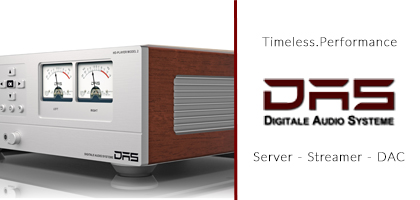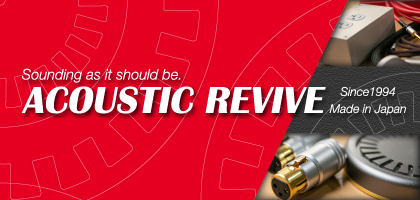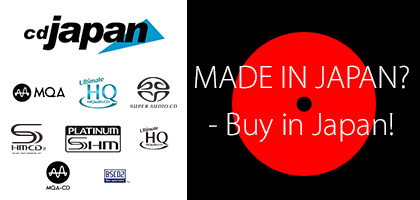No. 257 October 2025
- COVER REVIEW: ANCIENT AUDIO Silver Grand Mono Mk II ⸜ power amplifier • monoblocks » POLAND • Kraków
- KRAKOW SONIC SOCIETY № 153: 30 years of ANCIENT AUDIO » POLAND • Kraków
- FEATURE ⸜ music & technology: HISAO NATSUME presents - In search for the lost great pianism Chopin tradition » part 2 (France) » JAPAN • Tokyo
- REVIEW: AUDIOPHONIQUE Classic AP 300D ⸜ power amplifier » POLAND • Pruszków
- REVIEW: AVATAR AUDIO Holophony No. 1 ⸜ loudspeakers • floor-standing » POLAND • Osowicze
- REVIEW: DIVALDI Gold PA One ⸜ integrated amplifier » POLAND • Kraków
- REVIEW: J.SIKORA Aspire ⸜ turntable (deck + tonearm) » POLAND • Lublin
- REVIEW: MB AUDIO CABLE Silver ⸜ analog interconnect ⸜ RCA » POLAND • Turza Śląska
- REVIEW: XACT N1 ⸜ LAN switch » POLAND • Wrocław
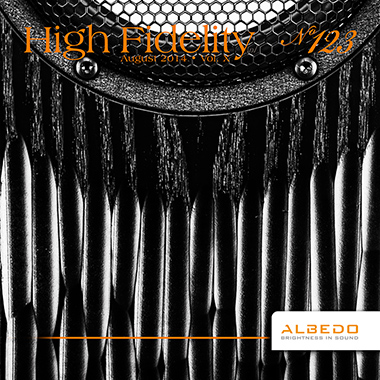

|

|
|
A TRIBUTE TO THE 1970s.
LED ZEPPELIN, SUPER DELUXE BOX SET: I, II, III 
But first: Gabriel’s concert

I drove to Łódź for Peter Gabriel’s concert with my son and our friend, Andrzej. We were meant to meet up there with another friend – also named Andrzej – who offered to be our tour guide around the city, who’d show us around a little and take us to the best places to grab something to eat and drink. He did a really great job – I certainly hadn’t seen that side of Łódź ever before, I didn’t even think anything like that existed. I remembered it previously as a city of abandoned buildings and dangerous streets, but it has evolved into a bustling city with modern apartment lofts, restaurants, offices, amazing food and awesome places to get a couple of drinks. It’s a city of culture, and you can really feel it, it’s not just some self-announced, false title. Incidentally, a short while after our trip to Łódź, there was an article in a Polish home deco magazine about one of the pubs we visited that evening, called Zmiana Tematu – Changing the Topic (Lena Szydłowska, Zmiana Tematu, “Dom & Wnętrze”, no. 6, June 2014, pg. 129-130). The pub is located in the area along Piotrkowska Street, which was not previously associated with good food but has been changing rapidly in recent years. It’s called Off Piotrowska. 
Slightly tired, but with a positive, buzzed mindset before the concert, we dashed for the Atlas Arena venue. When we entered the grounds, right before walking through the gates, my son passed me the tickets, asking me to hold them. Two steps later, they were gone. I was holding an empty paper “envelope” in which the tickets had arrived via mail. I must’ve been holding it in a way that let them slip out. We immediately returned to the place we had been standing but the tickets obviously weren’t there anymore. I must’ve looked as if I were about to die then and there. Humans are strange creatures – instead of thinking, I gave up instantly and said, “Let’s just go get drunk and let Andrzej drive us back to Kraków.” 
As it soon turned out, the tickets were worth any price. The concert was phenomenal. It was separated into three parts, preceded by an introductory mini-concert by two young support artists, Jennie Abrahamson & Linnea Olsson. The former plays an electronic vibraphone, the latter plays the cello, and they are both singers, too. During the third part of the concert, which was a performance of the album So, the first of the support artists sang Kate Bush’s parts. And it was great – I’d say she was a good, fresh version of Bush. Kate is classic, and nobody could ever surpass her, but Abrahamson sang exceptionally well. Since Linnea Olsson has already released her debut album, Ah!, I ordered it the day after the concert. She has a beautiful, lyrical outlook on music, with long sounds that reminded me of 4AD from This Mortal Coil phase. Maybe just a tad too long. The duet was much more interesting. But it’s still worth listening to. And a few more words about a Yes concertIn Łódź, Gabriel performed something that could be called a “live re-mastering” – with the original line-up (including Tony Levin on bass, who we’ve recently seen in a small club in Kraków!) he played his whole 1986 album So from start to finish. He did it marvelously –in his case, the older he gets the better he becomes. 
The very idea behind such performances is interesting, though. It might not be new, but it’s becoming increasingly popular recently. Not much later, on June 2nd 2014, in the Warsaw Congress Hall three full albums were played live: The Yes Album, Close to the Edge and Going for the One. I have not seen anything so well-played, well-sung and well-engineered in a long time. Yes, a band that had its debut in 1968 (!), is now a group of old guys. But I wish everyone to have as much fire at this age as Steve Howe, the band’s guitarist who joined before the recording of 1971’s The Yes Album. He's a real master, a guitar genius with magic fingers. And Chris Squire, who founded the band together with Jon Anderson, on bass. I didn't know that Steve and Chris could sing so great! The drummer Alan White was equally amazing, although he was in the shadow of Geoff Downes, the keyboard player. One thing made me wonder: the co-founder of Yes, Jon Anderson, doesn't sing with the band anymore. The new lead vocalist is Jon Davison who joined the band two years ago. I know and like the original Yes lineup. I love Jon Anderson's voice, also in a duet with Vangelis. But the things that were happening on stage, and the power that the young – in comparison with the other musicians on stage – vocalist Davison brought into the act just can't be described. His vocal timbre is incredibly similar to Anderson's, and at the same time it's different enough for there to be no need to make comparisons. And then there was the new vocalist's behavior – as if he was thrown onto the stage straight from the beginning of the 1970s, with a trail of smoke and characteristic smell behind him. The 1970s.
It’s because the 1970s are associated with drugs. But also with the birth of the best kinds of rock music that exists to date: progressive rock and heavy rock, whose later “child” would be heavy metal. Although it's still hard to perceive, the 1970s were probably the most fertile decade in rock music, similar to how the 1950s were for jazz. The period of time between 1970 and 1979 is still somewhat of a “guilty pleasure”, though. While the 1950s and 1960s are glorified for their interior design and even architecture, what came afterwards is often considered “spoiled” and tasteless. I think that it's still too recent a time for us to judge it objectively. And yet when correctly portrayed, it's fantastic. Have you already seen the movie X-Men: Days of Future Past? If you like this kind of movies it's a mandatory, if not best, part of the whole series (X-Men: Days of Future Past, dir. Bryan Singer, 2014). The movie straddles two different time periods, with the 1970s being the starting point. Aside from different gadgets which are characteristic to these times, it’s worth paying attention to the turntables in the room of a young Charles Xavier, played by the great actor James McAvoy, a reel to reel tape recorder in his study and LPs and tapes scattered around the place – the telltale signs that music was a very important part of his life. The screenplay writers definitely showed that. But it has to be said that they sure had some good music to play on their first systems. And the soundtrack features some really great songs (even if the original score isn’t that great): Roberta Flack and The First Time Ever I Saw Your Face, Alice Cooper and Hello Hooray, and finally the one that really sticks in your memory, Jim Croce’s Time In a Bottle. 
The 1970s saw Yes at their artistic and creative peak and their albums from this period are considered their best work. Although there wouldn’t be The Yes Album (1971), Fragile (1972) or Close to the Edge (1972) without their two previous albums, the 1969 debut Yes and the 1970 decade-opener, Time and a Word. A very similar story can be told of Led Zeppelin, who paved the way for all hard rock about as much as Yes did for progressive rock. |
In Western Europe, the 1950s and 1960s were the two decades with visibly different characters. The former was a pioneering phase of transitioning the Western European societies to a new model of activity, that of an American consumerism. The huge demand for all sorts of goods stimulated people’s interest in new products. The Cold War atmosphere of fear-mongering was definitely a factor for the young generation to break free of their parents’ war-time traumas and seek pleasure in the little things offered by life. Industrial design during this time period was dominated by the organic trend, which was represented by smooth shapes and vivid colors that appealed to the consumers. The new style was identified with the notion of modernity that was part of everyday life. The dynamic technological progress gave people the tools to learn the secrets of their bodies, to see microorganisms which had previously been invisible to their eyes, but also allowed the futuristic visions of exploring the world to come true. Passenger planes allowed people to travel around the globe, and the first satellites reached the Earth orbit. The USA and USSR, the world’s two leading superpowers, were involved in the space race. The decade that followed, the 1960s, can be enclosed in two related events: on April 12th, 1961, Yuri Gagarin was the first man in space aboard his Vostok 1 spacecraft; on July 20th, 1969 the Apollo 11 spacecraft reached the Moon and Neil Armstrong took that historic “small step for a man”. 
On January 12th, 1969, Led Zeppelin – founded by Jimmy Page – released their debut album in the USA, followed by II in October of the same year. Exactly one year later, in 1970, the world saw the release of III. 
The sound of the new versions is wonderful. I compared it with some older digital releases, both European and Japanese. The A.D. 2014 remaster is much clearer, but not bright. The most noticeable improvement can be seen in the bass extension and vocals. The latter finally sound on I the way I always thought they should. But the improved resolution is best manifested on II and III, especially in the unrivalled sonic differentiation and less clamor, with better coherence. Everything is clearer now, but also warmer. There’s less dirt in it. I understand that some people might not like this. But you can tell that this dirt came from some incorrectness in the transfer and problems with the medium. I’m yet to audition the vinyl version, as well as give a longer listen to the audio files. The latter sound very good from the limited bits I got to hear. 
I put a lot of emphasis on vinyl for a reason. It’s an increasingly “hot” topic. I’m sure that it’s going to “overheat” soon. But that will be many miles above sea level, when the vinyl business has been warmed up sufficiently. Until that moment comes, however, we’ve got a real flood of new releases. Since there are so many of them, record labels are looking for something fresh. And they find it for example in Russia – check the review of the Solaris movie soundtrack HERE – and in Poland. The Vinyl Factory record label whose tasteful and refined re-releases can be found in the Design Museum in London (see HERE), recently published quite an interesting article about the Polish band Skalpel who masterly combine retro sounds with modern grooves (Polish sample kings Skalpel dig into their record collections, The Vinyl Factory” May 28th, 2014, see HERE). The band’s members, Igor Pudło and Marcin Cichy, have thousands of vinyl records in their collections. One of the most interesting labels from Japan, Belle Antique, has also reached out towards Polish artists. The label, known for releasing krautrock classics, including forgotten bands from Italy, Canada and France, this time decided to delve into some of the more interesting Polish gems. Five of SBB albums were scheduled to be released on April 25th (the date was then pushed forward): Pamięć, Nowy horyzont, Ze słowem biegnę do ciebie, Wołanie o brzęk szkła and Welcome. I have no recollection of the Japanese ever treating a Polish artist this thoroughly in the past. The discs will be released in a mini-album format (Cardboard Sleeve, mini LP), with the OBI, and pressed as SHM-CDs, with an optional box for all the albums. Wonderful! As I’ve heard from Michał Wilczyński from GAD Records, he had some personal input in the release. I have to delve deeper into that. 
And if we’re talking digital and Japan, let’s mention the fact that “High Fidelity” has been featured again in the “Stereo Sound” magazine. In a Reimyo advertisement, Mr. Kazuo Kiuchi decided to dedicate an entire page to a shortened version of our review of the Reimyo DAP-999EX Limited D/A converter, proudly referring to the Statement Award which the DAC had received. We found out about this from our Japanese friends who were also kind enough to translate fragments of the whole article. But even those of you who don’t know the language of the Samurai will notice the Latin alphabet characters which say the words High Fidelity and Statement Award. 
Closing remarks I didn’t manage to fit in everything I wanted to talk about this time. I didn’t want to disrupt the article’s flow, which was focused on the new Led Zeppelin box sets. I’ll just mention a few important things now. GAD Records released a re-edition of two Alex Band albums: Zderzenie myśli from 1979 and The Eccentric from 1980. The music is interesting and the albums sound very good. I’ll try to write a little more about it sometime soon. 
A while back, IKEA announced that they would end production of their most popular shelving unit for 12” LPs, the Expedit. There was an instant uproar online – in Germany a special Facebook fan-page was founded, and it has gathered 8,000 likes thus far. The Swedish company instantly announced a new, similar bookshelf – the Kallax. And to truly finish it off, here’s an example of modern audio-related industrial design, the Vitruvio designer speaker – see HERE. 
Editor |
About Us |
We cooperate |
Patrons |
|
Our reviewers regularly contribute to “Enjoy the Music.com”, “Positive-Feedback.com”, “HiFiStatement.net” and “Hi-Fi Choice & Home Cinema. Edycja Polska” . "High Fidelity" is a monthly magazine dedicated to high quality sound. It has been published since May 1st, 2004. Up until October 2008, the magazine was called "High Fidelity OnLine", but since November 2008 it has been registered under the new title. "High Fidelity" is an online magazine, i.e. it is only published on the web. For the last few years it has been published both in Polish and in English. Thanks to our English section, the magazine has now a worldwide reach - statistics show that we have readers from almost every country in the world. Once a year, we prepare a printed edition of one of reviews published online. This unique, limited collector's edition is given to the visitors of the Audio Show in Warsaw, Poland, held in November of each year. For years, "High Fidelity" has been cooperating with other audio magazines, including “Enjoy the Music.com” and “Positive-Feedback.com” in the U.S. and “HiFiStatement.net” in Germany. Our reviews have also been published by “6moons.com”. You can contact any of our contributors by clicking his email address on our CONTACT page. |
 



|
   |
main page | archive | contact | kts
© 2009 HighFidelity, design by PikselStudio,
projektowanie stron www: Indecity



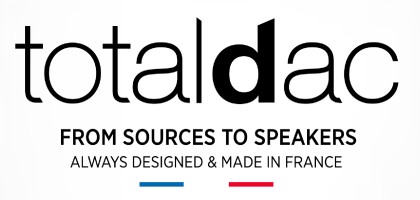


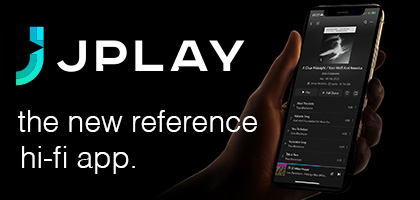
 ave you ever lost the tickets to an event that’s really important to you? And have you ever lost them just as you enter the event? If you have, then you probably remember the overwhelming panic, that incapacitating feeling when all the color drains from your face and your legs suddenly feel like they’re made of lead. Your mind goes completely blank and you’re going round in circles, frantically searching through all of your pockets, even asking all the people around you whether they had seen your lost tickets. I wouldn’t like to imagine my own face when something like that happened to me.
ave you ever lost the tickets to an event that’s really important to you? And have you ever lost them just as you enter the event? If you have, then you probably remember the overwhelming panic, that incapacitating feeling when all the color drains from your face and your legs suddenly feel like they’re made of lead. Your mind goes completely blank and you’re going round in circles, frantically searching through all of your pockets, even asking all the people around you whether they had seen your lost tickets. I wouldn’t like to imagine my own face when something like that happened to me. 